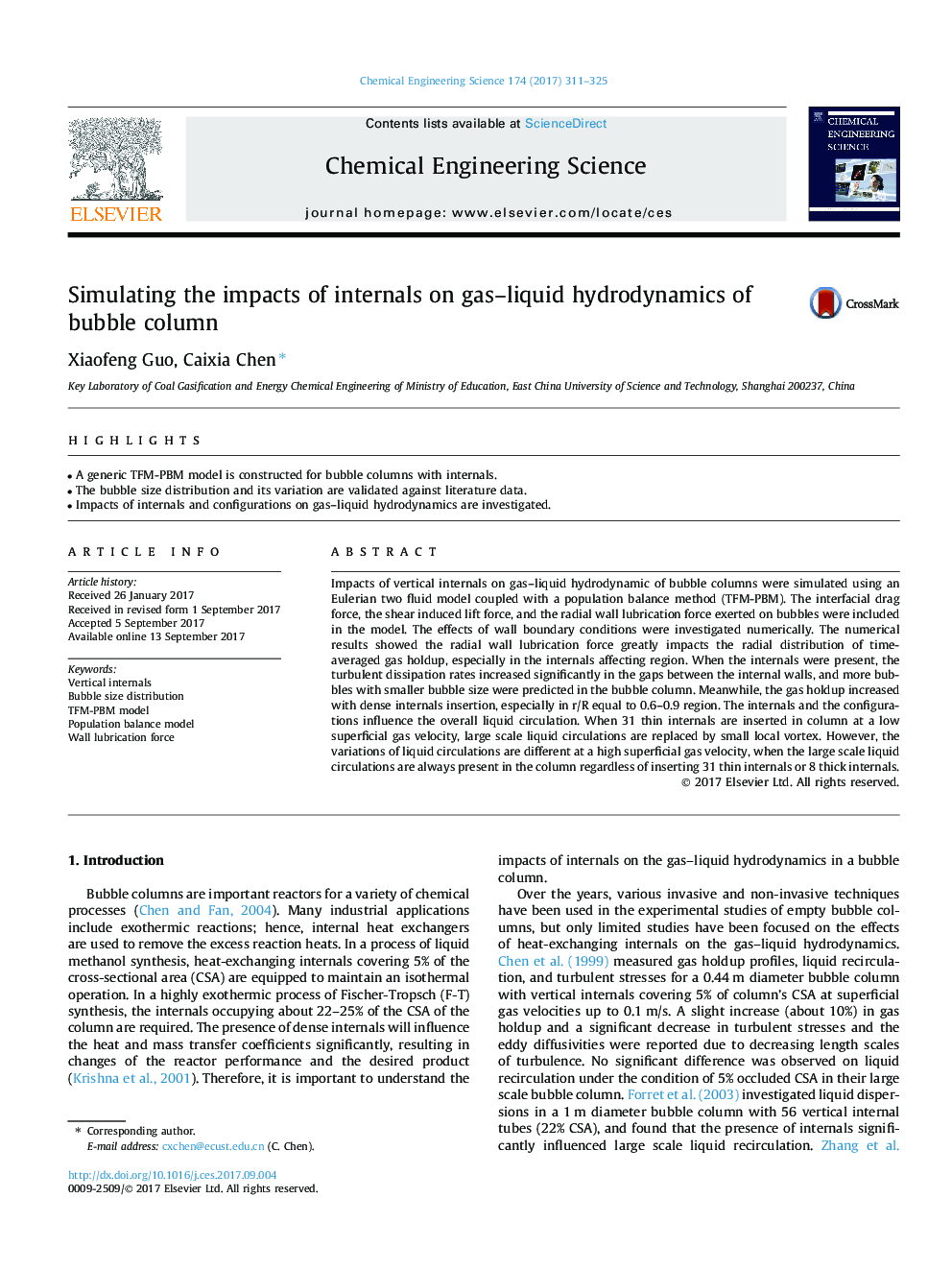| Article ID | Journal | Published Year | Pages | File Type |
|---|---|---|---|---|
| 6466915 | Chemical Engineering Science | 2017 | 15 Pages |
Abstract
Impacts of vertical internals on gas-liquid hydrodynamic of bubble columns were simulated using an Eulerian two fluid model coupled with a population balance method (TFM-PBM). The interfacial drag force, the shear induced lift force, and the radial wall lubrication force exerted on bubbles were included in the model. The effects of wall boundary conditions were investigated numerically. The numerical results showed the radial wall lubrication force greatly impacts the radial distribution of time-averaged gas holdup, especially in the internals affecting region. When the internals were present, the turbulent dissipation rates increased significantly in the gaps between the internal walls, and more bubbles with smaller bubble size were predicted in the bubble column. Meanwhile, the gas holdup increased with dense internals insertion, especially in r/R equal to 0.6-0.9 region. The internals and the configurations influence the overall liquid circulation. When 31 thin internals are inserted in column at a low superficial gas velocity, large scale liquid circulations are replaced by small local vortex. However, the variations of liquid circulations are different at a high superficial gas velocity, when the large scale liquid circulations are always present in the column regardless of inserting 31 thin internals or 8 thick internals.
Related Topics
Physical Sciences and Engineering
Chemical Engineering
Chemical Engineering (General)
Authors
Xiaofeng Guo, Caixia Chen,
